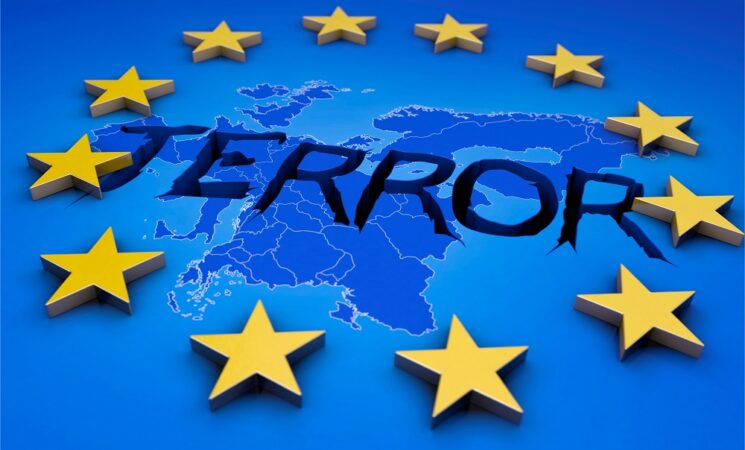15 October 2020, NIICE Commentary 6290
Shreya Sinha
Threats to security can be classified into traditional and non-traditional security threats. Non-traditional security threats are often transnational in scope, neither totally domestic nor purely inter-state and are transmitted rapidly due to globalization and increasing porosity of borders. In the post-Cold War World, the definition of security has expanded away from a narrow military focus to include threats from a number of non-state actors. The end of the Cold War can be seen as the end of an intense ideological confrontation between the East and the West as well as the disintegration of the Soviet Union. This came to be observed as a major turning point for global security paradigm as the existential threat of war declined. It was expected that inter-state violence would become a thing of the past and the end of the Cold War would result in greater cooperation among states and individuals. In this context, non- traditional forms of security threats to actors across the globe have emerged which consist of organized crimes, environmental degradation and international terrorism which victimize both society and state.
Terrorism has assumed importance as one of the most visible and challenging non-traditional threat to national security, especially after the 9/11 attack on the United States. Terrorism is a multi-dimensional problem which is dealt with multiple actors with varying perceptions. Often the internal dimensions of terrorism become intrinsically linked with the external dimensions, which makes securitisation at the international level complicated. It poses a grave threat to democracies with its anonymous, non-state and unpredictable nature. In this context, it becomes important for states as well as various international actors and organisations to adopt a comprehensive strategy or policy to prevent and combat terrorism.
Terrorism has not been a new phenomenon to Europe as western European countries were continuously exposed to terrorist attacks since the 1950s. However, from 2001 onwards, the European Union and governments of Member States have become further concerned with the increase in terrorist attacks on the European soil. The EU is an area of openness, facilitating interdependence as well as free movement of people and resources. Such an environment makes EU more susceptible to terrorist attacks. This has highlighted the vulnerabilities that are inevitable in open societies and open democracies of the Union. Challenges posed by the threat of terrorism highlighted the need for an effective approach towards terrorism and the subsequent development of a counter-terrorism strategy.
The European Security Strategy of 2003 has recognised five key threats to European security, namely the proliferation of weapons-of-mass-destruction, regional conflicts, state failure, organized crime and the threat of terrorism. The European Union through its strategies and documents views terrorism as a criminal offence. From the EU’s perspective, terrorism is best treated as an organised crime and counter-terrorism in the EU is structured accordingly. The EU accords supremacy to the rule of law, political, and financial means and accordingly for Brussels, terrorism is primarily a call for global action but not global war. According to the EU, the best way would, therefore, be by tackling the root causes of terrorism through increased democracy, literacy, equality and economic growth to eradicate it.
In response to the threat to terrorism, the EU adopted its first ever counter-terrorism strategy in 2005, which undertook a cross-border law enforcement approach such that EU’s ability to combat terrorism depends on investigations and intelligence. Focusing on the underlying causes of terrorism such as the lack of development, poor governance and poverty, the EU formulates its multi-dimensional approach on countering terrorism while situating it in the nexus of development and security. The approach adopted by EU was quite distinctive from the assertive military-based approach, evident through the putative ‘war on terror’, unilaterally adopted by the US. The difference in approach emanates from the basic fact that most Europeans view the threat differently from the Americans. EU does not generally support the idea of ‘war on terror’ and tends to criticise the American approach as over-reactive and militarily driven.
The distinctive approach of the Union represents its law-enforcement approach as well as highlights the limitations of their military. The EU’s foreign policy objectives focus greatly on cooperation with the UN and other countries in deepening the counter-terrorism goal. Other objectives also include promoting good governance, democracy, education and prosperity, within as well as outside the EU.
The EU governments are much more focused on the threat within Europe and on preventing bombings like those carried out in Madrid in 2004 and in London in 2005. As a result, although the US is prepared to fight actual wars to tackle terrorism, such as the 2001 campaign in Afghanistan, the Europeans are much less willing to conduct major military operations around the globe to hunt down terrorists. As opposed to the US ‘war on terror’, the EU’s approach to terrorism follows a law-enforcement stance, both in terms of its focus on the internal and external threat as well as its strong preference for non-military means, placing human rights at the heart of EU strategy.
Thus, the Member States of the Union approach terrorism as a means rather than an end. In other words, the Union tries to focus not only on the short-term response and mitigation of attacks but also tries to understand the underlying causes behind the growth of terrorists and the support they receive. The EU’s perception to terrorism follows a long-term political approach. Such a multi-dimensional approach adopted by the EU is reflected in the EU’s Counter-Terrorism Strategy adopted in 2005.

